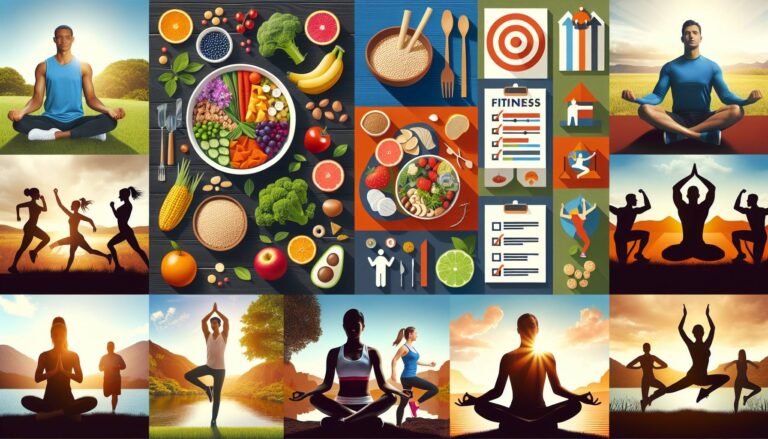Many of us have lost touch with our most basic instrument for negotiating health and wellness in our always linked yet more detached environment: our well sense. Our hectic lives, reliance on technology, and separation from natural cycles have impaired our natural capacity to recognize and respond to our body’s signals, emotional demands, and environmental influences. Perhaps the most underappreciated yet effective way to enhance general health in the fast-paced modern environment is developing a strong well sense.
To experience improved health, though, what precisely is well sense and how can we foster it? This all-inclusive book investigates the idea of well sense and offers doable techniques to acquire this essential ability for improved mental, emotional, and bodily state.
Explain Well Sense
What Is Well Sense?
Your intuitive ability to identify, understand, and react suitably to signals from your body, mind, emotions, and surroundings is what defines well sense. It is the internal guidance system that enables you to make better decisions free from depending just on outside counsel or trends. Consider it as your own personal health GPS, continuously offering comments on what either supports or compromises your particular wellness.
Well sense is very personal and experiential, unlike medical expertise or health facts. It is about learning to have a relationship with yourself that lets you know what your particular body and mind demand in various contexts. This could be realizing when you need rest before tiredness sets in, identifying emotional overwhelm before it turns into anxiety, or knowing instinctively which foods invigorate you rather than slow you.
The Importance of Well Sense in Modern Life
We are inundated with contradicting health advice in the knowledge-rich society of today. One specialist advises intermittent fasting, while another supports six daily modest meals. While some research advocate mild movement as best, others support high-intensity workouts. This never-ending assault of contradicting facts can cause uncertainty and distance from our own inner wisdom.
Well sense offers clarity among this cacony. By improving our capacity to pay attention to our body’s signals, we may better assess which health behaviors truly help us personally. Nowadays, this customized approach is especially important as conventional health advice sometimes ignores the personal biochemistry, genetics, lifestyle choices, and preferences that define each of us.
Moreover, as healthcare systems get more taxed, building good well sense helps you to become a more active participant in your health journey, therefore possibly averting issues before they call for medical attention.
The Five Elements of Well Sense
Well sense is a constellation of awareness ability that cooperate to improve general health intelligence, not a single ability. Let us go through every element:
Physical Awareness
Good sense starts with physical awareness. It is about being able to recognize and decipher physical reactions, energy levels, and body feelings. Highly physically conscious people can:
See minute physical changes in their body before they start to cause issues.
Understand how various foods impact their digestion and energy.
Know their particular sleeping requirements and habits.
Feel when their body calls for movement instead than rest.
Look for early warning signals of disease or imbalance.
Many of us have been trained to push through tiredness, ignore hunger signs, or conceal pain by overriding physical indications. Rebuilding physical awareness calls for focused attention to these neglected signals.
Emotional Intelligence
Emotional well sense is the awareness, knowledge, and proper reaction to your emotional states. This component comprises:
Seeing emotions as they surface instead of following their escalation
Recognizing emotional patterns and triggers
Seeing how emotions show themselves physically in your body
Differentiating between more profound emotional needs and fleeting emotions
Creating constructive means of expressing and handling feelings.
Though many of us have learnt to ignore or overthink our emotions rather than use them as direction, they offer important insight about our needs and limitations.
Mental Clarity
Mental well sense consists in awareness of your mental state, cognitive energy, and thought patterns. This incorporates:
Understanding when your brain is clear rather than hazy
Seeing habits that either improve or compromise wellbeing
Knowing your best conditions for creativity and focus
Seeing early indicators of mental tiredness or stress
- Differentiating between rumination and productive thought
Many people in our hyperconnected society encounter continuous mental stimulation without enough downtime, so mental well sense development becomes especially difficult.
Social Linkivity
Social well sense is knowledge of how social activities and relationships effect your health. This includes:
Understanding which interactions boost rather than drain you
Knowing your social demands and limits
In groups, identifying harmony or tension
Knowing when you need company instead of alone
Understanding how the emotions and energy of others impact your own wellbeing.
People are naturally social beings, hence our interactions greatly affect our health in ways we usually ignore.
Environmental Sensibility
Environmental well sense connects your mental and physical condition with the physical surroundings. Included here are:
Observing how various environments impact your energy and mood
Sensing how environmental elements including light, noise, and air quality affect you
Acknowledging your body’s reactions in natural versus manmade surroundings
Knowing how seasonal variations impact your quality of living
Finding environmental pressures before they become major issues
Though many of us have grown insensitive to these effects, our surroundings always affect our health.
Building Physical Sense
The basis of general health consciousness is physical well sense. Here is how to enhance this important element:
Body Scanning Methodologies
A organized technique of observing sensations free from judgment, body scanning is paying attention to several areas of your body. This exercise enables one to re-connect with possibly disregarded physical awareness.
Try this easy daily routine:
The first is Discover a comfortable posture when lying or sitting.
- Close your eyes and inhaled deeply multiple times.
- Call attention to your feet and note any sensations—temperature, pressure, tingling, etc.?
- < Start your gaze slowly upward across your whole body.
Five. Note regions of conflict, discomfort, or very delightful feelings.
Sixth: Finish by appreciating your body as it is.
Regular body scanning helps create a baseline understanding of how your body usually feels, so facilitating the identification of little alterations before they become issues.
Learning Physical Warning Signs
Although many of us have learnt to overlook these faint indications our bodies give before disease or harm. Typical warning indicators are:
Unusual tiredness unrelated to your degree of exercise
Modifications in digestion or pain
Unexplained migraines or vertigo
Muscle tension or peculiar feelings
Changes in sleep pattern or quality
Throughout the day, practice routinely asking “How does my body feel right now?” without instantly trying to fix or evaluate any sensations. This basic awareness exercise develops the tendency of tuning in instead than turning off.
Reading Significance of Fatigue and Hunger
Our normal interaction with hunger and energy cycles has been upset by modern living. To reconstruct correct understanding of these signals:
Regarding the awareness of hunger:
Before eating, score your appetite between 1 and 10.
Note physical rather than emotional hunger cues.
Watch how various foods alter your satiety and energy.
Try eating when really hungry instead of depending just on the clock.
Regarding tiredness awareness:
Track your natural energy swings across the day.
See early indicators of tiredness before you run out.
Try responding to fatigue with brief rests.
Sort physical tiredness from mental tiredness from boredom.

Building Emotional Well Sense
Emotional well sense enables us to keep balance and negotiate obstacles of life. Here’s how you grow this:
Emotion Identification Techniques
Many of us have little emotional vocabulary, which makes exact identification of what we are experiencing challenging. Try these techniques:
Emotion labeling: Try to identify exactly what you are feeling—beyond just “good” or “negative”.
Note where and how emotions show themselves in your body.
Emotion notebook: Track emotional trends and triggers.
Wheel exploration: Increase your emotional vocabulary with an emotional wheel chart.
Emotions are information; they are neither good or negative. While sadness usually points to a loss that requires acceptance, anger could suggest a boundary violation.
Response Management of Stress
Emotional well-being depends on your becoming aware of your own stress reactions. Stress affects people differently; some become agitated, some retreat, some have mostly physical effects.
To develop consciousness of stress response:
One could say that Learn to identify your early stress signals—shallow breathing, tense jaw, rushing ideas.
Second. Specify your usual patterns of stress reactivity.
three. Practice “stress interruption” by stopping at early symptoms.
- Try several controlling strategies to see which one suits you.
- Make note which particular events set off your stress reaction.
Improving Mental Well Sense
Mental well sense is awareness of your cognitive processes and needs:
Mindfulness for Cognitive Awareness
Mindfulness exercises help you become able to see your ideas without reacting to them right away:
Dedate five to ten minutes every day to just observe your ideas.
As ideas come to you (“planning thought,” “concern thought,” etc.), practice marking them as such.
When your focus veers, gently bring it back.
See how your thinking changes in various surroundings.
Pay close attention to indicators of mental tiredness against involvement.
Pattern Recognition of Thoughts
Our brains often follow habitual paths that profoundly affect our welfare:
Observe repeating ideas or motifs.
List the mental patterns that either drain or inspire you.
See realistic appraisal against catastrophic thinking.
See how your ideas shape bodily feelings.
Learn to separate useful from detrimental thoughts.
Tracking your dominating thinking patterns for several days can assist you to identify any trends and their relationship with your mood and energy level.
Boosting Social Well Sense
Although our health is much influenced by our social contacts, we sometimes overlook this aspect of wellness:
Building Relationship Sensibility
To boost social well-being:
After social events, observe your feelings—energized or exhausted?
Pay close attention to physical feelings experienced in all kinds of social interaction.
Look for those relationships regularly boost rather than drain you.
See how your approach to communication influences interactions.
See the indicators you need connection instead than seclusion.
List important relationships and note whether, under what conditions they usually energize or deplete you. Then try drawing a “relationship energy map”.
Establishing Reasonable Limits
Social well sense revolves mostly on boundary awareness:
Look for both emotional and physical signals of boundary transgressions.
Learn straightforward and explicit expression of needs.
Play about with various degrees of social interaction.
Identify persons and circumstances that repeatedly violate your limits.
Consider when you are overextending instead than really participating.
Remember that limits are filters that let good communication flow while safeguarding your health—they are not walls.
Building Environmental Well Sense
Our health in ways we usually overlook is substantially influenced by our physical surroundings:
Building Harmonious Areas
To become sensitive to the surroundings:
See how various lighting influences your energy and mood.
Consider how clutter against organization shapes your perspective.
See how your stress and focus suffer with different noise levels.
Experiment with several workspace configurations.
See your preferences for temperature and how they influence comfort.
Try this: Quietly observe how each room in your house makes you feel while you sit there. In your body sensations, emotions, and ideas, what minute variations show up?
Practices of Nature Connection
Natural surroundings provide especially rich information for growing feeling of awareness:
Go on “sensory walks” emphasizing every sense separately.
See how various weather conditions influence your energy and mood.
See seasonal changes in your sleep, appetite, and degree of exercise.
Consider how time in nature compares to urban surroundings influences you.
Walk barefoot to improve physical environmental awareness.
Our sensitivity to environmental cues can be adjusted even by short nature exposure.
Practical Exercises to Develop Well Sense
Developing good taste calls for constant work. These combined strategies help to improve all the elements:
Daily Thought Techniques
Plan five to ten minutes per day for a thorough check-in.
One should Physically, scan your body for sensations and energy levels.
two. Emotional: List present emotions together with their strength.
In 3. Mental: Observe mental clarity and patterns of thinking.
In 4. Social: Think back on lately exchanged interactions and their effects.
Five. Environmental: Think on how your surrounds are influencing you.
This small habit helps one to develop the awareness of all dimensions of well sense.
Well Sense Notes
Maintaining a well sense notebook speeds your awareness development:
Track physical experiences, energy patterns, and medical notes.
Note throughout the day emotional states and triggers.
Track mental clarity and elements either improving or reducing it.
Record social contacts and how they affect welfare.
See how your surroundings affect your general state.
Search for trends over time that highlight your own well sense profile—that particular set of elements that either constantly support or compromise your welfare.
Breaking Through Obstacles to Grow in Well Sense
Many often occurring challenges can hinder the development of well sense:
Constant exposure to health advice can shut out internal signals Information overload Periodically try a “health information fast” to re-connect with your own wisdom.
Digital distraction: Many times, technology draws attention outside. Set up frequent tech-free times to help people become internally conscious.
Busyness culture: Continuous activity gives little room for seeing minute signs. Plan “sensing breaks” all through your day.
Early events might have led you to ignore some signals. Approach these spheres especially gently and sympathetically.
Perfectionism: Well sense growth is more about slow reconnection than about perfect awareness. Celebrate little events of heightened awareness.
Remember that the road of acquiring healthy sense is lifetime. Every second of more consciousness strengthens your ability for health intelligence.

Conclusion
Developing well sense marks a basic change from outside-directed health treatments to inner-guided wellness. You develop a customized approach to health that acknowledges your particular requirements and situation by improving your capacity to recognize, analyze, and respond to signals from your body, emotions, mind, relationships, and surroundings.
This does not mean discounting evidence-based medical advice or guidelines. Instead, well sense offers the awareness to apply broad health knowledge in ways that actually benefit your own circumstances. It helps you to become the main source of knowledge on your well-being and to carefully apply outside knowledge as needed.
Your well sense will probably help you to see health advantages going beyond the apparent. Many people claim not only better physical health but also stronger emotional resilience, better relationships, more life pleasure, and a closer connection to their environment and self.
The path toward well sense starts with a basic dedication to stop, observe, and respect the wisdom existing within you. Intelligence found in your body, intellect, emotions, and senses has developed over millennia. Learning to listen to this intelligence will help you to activate your most effective health resource—one that is freely available to you in every moment, totally free, and exactly suited to your particular needs.
FAQs About Growing Well Sense
Development with sense is quite personal and continuous. Most people see notable changes in two to three months of regular practice; yet, deeper awareness changes with life. Your beginning degree of bodily awareness, consistency of practice, past experiences with ignoring internal cues, and general stress levels all influence development pace. Celebrate every moment of more awareness instead of perfection.
No, sensible advice enhances rather than substitutes medical treatment. Professional healthcare for diagnosis, treatment of major diseases, preventive screenings, and specialized knowledge benefits even highly developed well sense people. The perfect strategy combines suitable medical support with great personal awareness. Well sense will enable you to follow advice in ways optimal for your particular circumstances and interact more successfully with healthcare professionals.
3. Is the same sense as intuition?***
Though connected, well sense and intuition are not exactly the same. Well sense especially addresses health-related awareness from physical, emotional, mental, social, and environmental aspects. Usually, it develops with attention and deliberate activities. Usually more wide, more instantaneous, intuition is also sometimes less understandable. Though both are valuable means of knowledge that supplement analytical thinking, well sense activities frequently improve intuition.
Common and usually reflecting the complexity of our requirements are conflicting signals. You could experience, for instance, both physical exhaustion and mental restlessness or hunger and stomach trouble. Start by appreciating all signs without judgment rather than trying to fix these right away. You will grow more sensitive over time regarding which signals, in various situations, demand top attention. Sometimes contradictory signals point to a need to correct fundamental imbalances instead of only reacting to the most acute feeling.
Sure! Although our baseline bodily awareness is shaped by early events, neuroplasticity lets us create new sensory connections all our life. While younger people could have benefits in terms of fewer ingrained behaviors to overcome, older persons often shine in some areas of well sense because of life experience and more self-awareness. The techniques discussed in this article can be modified to fit any age or ability level, so enabling everyone to develop naturally.









